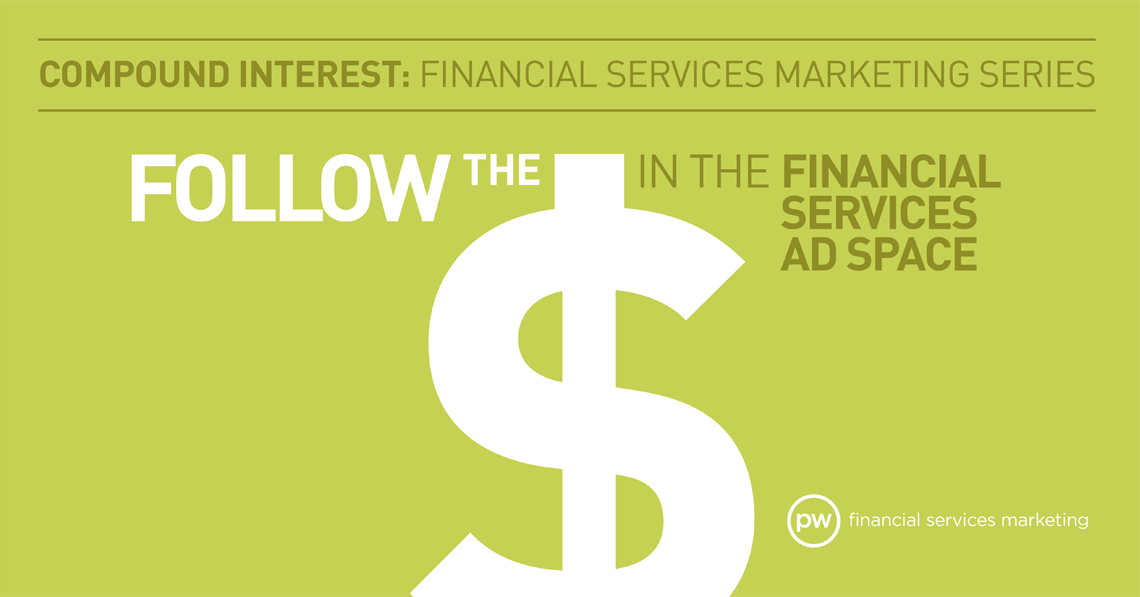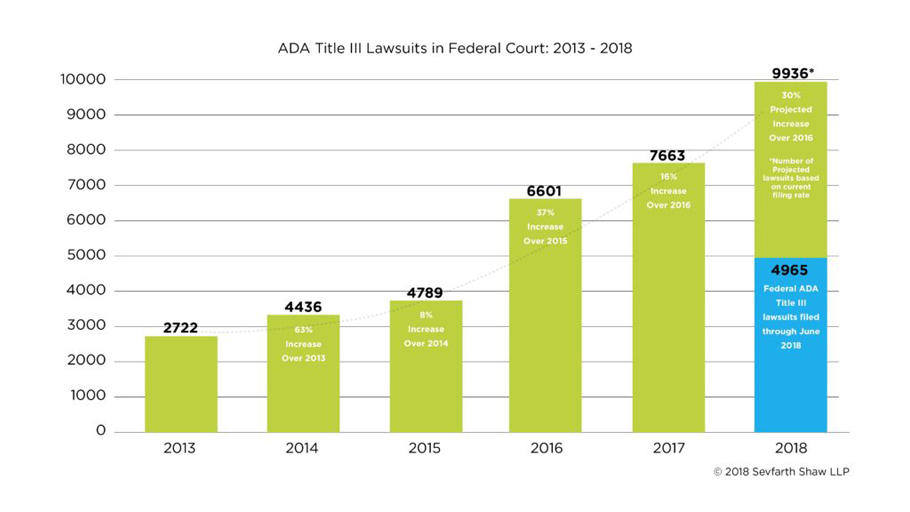Part of our Compound Interest bank marketing series
Ad dollars are on the move in the financial space – increasingly shifting from traditional to digital, and specifically to mobile. While financial services have historically relied on more traditional vehicles, times are indeed changing. In this edition of the Compound Interest series, we’ll talk about why it is time to up your digital game and how to do it.
By the numbers
The first thing to consider is simply how existing and potential customers are spending their time. In 2019, consumer digital usage continued its steady rise. According to eMarketer data, it is currently estimated that the average American adult is spending six hours and 35 minutes per day on the internet. What’s driving that growth is an increasing amount of time spent on mobile devices, in particular on social media or “shopping.” In fact, mobile usage now surpasses every other single media vehicle – with a total of three hours and 43 minutes per day.
As a result of increased time spent online, every other form of media is being used less year-over-year and that trend is expected to continue. Not only are consumers using digital more, but the growth in total offline media consumption has slowed to a crawl or contracted.
As a result of the changing media landscape and how people now consume media, marketers in the financial industry, in order to engage their audiences directly and meaningfully, are spending more on digital media.
According to a 2019 report by the IAB, paid search is expected to grow over 21% in the financial sector and mobile will increase by 23% while display and video are expected to grow 18% each in terms of digital spending. On social, the majority of spend falls on Facebook and YouTube, followed by full-episode players publisher direct sites/apps, Twitter, LinkedIn and Instagram.
In financial services, major banks are emphasizing digital ad spending and are increasing marketing expenditures by at least 40% year-over-year, but they are finding they have to work harder to maintain share of voice. Even so, digital is getting tangible results. For example, 52% of credit card acquisitions are currently occurring through digital channels.
While financial institutions have historically relied heavily on traditional media vehicles, they now must shift their approach to effectively reach more prospects and convert more customers. To keep up with or beat the competition, part of that realignment will mean an appropriate increase in mobile advertising’s share of your marketing pie. And it’s no overstatement to say that mobile should hold a prominent position in that plan.
Digital media continues to offer better targeting and more personalization
In addition to seismic shifts in competitive behavior and media consumption habits, the utility of digital media continues to grow for advertisers. In 2020, ongoing advances in machine learning, data collection and analytics are increasingly available to all advertisers. As more data is collected and analyzed, we have a greater ability to buy media efficiently AND effectively. This dynamic helps to address one of the critical concerns of financial services marketers – causality. Through the use of digital media, the ability to attribute spend to returns is materially improved, allowing marketers to demonstrate the impact and ROI of investments. By moving from “spend” to “investment,” opportunities for greater allocation improve as does the opportunity to demonstrably generate incremental revenue.
Just as importantly, with our increased ability to target products and offers, we can also create more meaningful customer experiences. According to the 2019 Retail Banking Trends report, data and advanced analytics is the #1 trend, even above customer experience. However, this report is not stating that customer experience isn’t important, but rather that data and analytics can serve as the foundation for customer experience and other banking trends, providing more direct insight into customer preferences and opportunities to address them directly in real time.
Social media and content development is critical
Facebook is still one of the top ad platforms that both marketers and customers utilize. YouTube, Instagram, Pinterest, and LinkedIn are also continuing to grow thanks to better targeting, improved algorithms, and better creative opportunities.
Why does this matter? As with general marketing trends, content is critical. Pictures matter. Video is engaging and educational. Especially in financial services where creating an emotional connection is vital but difficult. Pinterest is no longer just for photos of great recipes. Financial marketers need to be a part of the conversation in an engaging way – illustrating how consumers can achieve their aspirations with your help and thereby establishing an emotional bond between the audience and the institution. And while many banks are aggressively playing catch up on social platforms, according to Hootsuite, they are sorely lagging in relevant content development.
Before spending advertising resources to boost or target native social content for your bank, it’s essential that you have a plan and the resources to create content that is authentic and useful. It is this trend towards story-based sharing combined with increased digital screen time that is helping banks achieve client acquisition (and retention) goals with social.
Moving forward
Now that you’re armed with these trends, what do you do with them?
Adjust spending
- Make sure that your ad spend reflects the current consumption habits of your target consumers. In your markets this probably means an uptick in mobile display at the expense of a traditional medium like outdoor or broadcast. That’s not to say cast out traditional media. There remain valid reasons to leverage high reach media for brand messaging, although it’s a fallacy that brand advertising on digital doesn’t perform. In fact, there is strong evidence that traditional media accelerates and improves digital advertising yields. Just adjust your mix to make sure that you are capturing the growing number of customers, especially millennials and the growing Gen Z target who expect to engage banks online and ensure that you track and measure performance across channels.
The right tactics
- Since much of this conversation is about the shift to mobile online, ensure that your media partners are appropriate to the task at hand. For example, we’re increasingly recommending geo-fencing and digital display to reach potential consumers on their mobile devices to great effect.
Messaging
- As it relates to customer experience, ensure that your messaging is not talking AT potential customers, rather that it’s delivering useful, actionable information. Also ensure that your messaging and experience online, offline and in-branch is consistent and coordinated.
Plan attribution
- There’s a lot of talk about attribution modeling. We’re dedicating a detailed article specifically to this topic in a coming edition of Compound Interest, but a well thought out attribution plan will help you adjust your media mix for individual markets to maximize and prove results. Attribution will help you weigh the impact different online and offline media are having at driving traffic to your website, branches and to specific targeted offers and will ultimately help you lower your cost per acquisition.
Today more than ever before, effective media planning is an iterative process. The good news is that the ongoing migration to digital tools will continue to give banks a fighting chance to leverage first party data for a competitive advantage against national institutions. This migration will also give you greater transparency regarding what works for you. If you have any questions about the changing digital landscape for banks, you’re welcome to give us a call at 502-499-4209 or drop us a note at PriceWeber.com.



